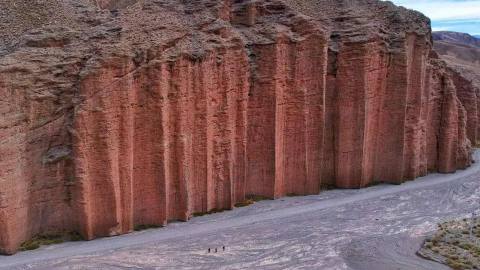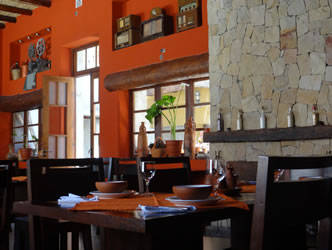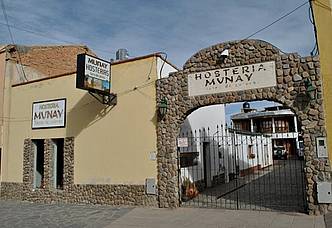Potosí, the Silver City
Potosí has been known as the “city of silver” throughout history, a nickname both literally and unfortunately correct.
Mount Rico at Potosí -whose name means “rich”- is a silver reddish mountain that, ever since the Spanish conquest, has kept giving silver to those who every single day of the year and sometimes in inhuman conditions keep on extracting the sacred metal worshipped by the Incas, who would only offer it to their gods as a gift.
Leaving the city on any of the so many excursions heading for the mines, it is possible to watch the various galleries, chimneys, elevators and shafts inside the mines. Furthermore, it is possible to enter the tunnels on metal carts, which go up and down 6 levels of 15 to 20 meters of height, and a temperature ranging between 25º C and 30º C. Excursions show how minerals such as zinc, silver, lead and tin are exploited at present.
Cities in southern Bolivia
Potosí is a mining town by nature located 4,200 meters over sea level. Therefore, it is common to come across the workers of the mines in the streets everyday. The center of the city is historically, architecturally and culturally wealthy in traditions that make visitors understand the costumes and beliefs of the miners. Some of them are the challa (a toast) with alcohol, coca and cigarettes, celebrated as a tribute to “Tata Ckacchu” (god of the miners), to Tío (Uncle) -the owner of the silver- and the llama blood spilt in the mouth of the mine as a tribute to Pachamama (Mother Earth).
This idiosyncrasy, in addition to the typical mates de coca (coca tea), is part of the daily folklore in a city where everything somehow takes place inside a great mountain. Though, of course, it is not fair for anyone.
Sucre, the Capital Forever
Following the logical route, we arrived in Sucre, the present capital of Bolivia. Although many people attribute this title to La Paz, as the executive and legislative branches operate there, Sucre still lodges the judicial branch of government. It was a political decision to divide government activities into two cities aiming at joining the country, due to the great social and communicational differences that still exist in Bolivia.
But Sucre continues to be the capital of Bolivia. Founded as a viceroyalty city between 1538 and 1540 by Captain Pedro Anzures, marquis of Campo Redondo, it was first called Villa de la Plata, and later its name was changed to Charcas, Chuquisaca and finally its present name: Sucre, after the great marshal of Ayacucho.
As it was the venue for important institutions such as the bishopric of la Plata (Archbishopric as from 1609), the Royal Court of Charcas, the Carolina Academy and the University of Saint Francisco Xavier, to mention some of them, the city acquired great prestige that has remain throughout history, since colonial times.
In May 25, 1809, the birth of the Republic of Bolivia was conceived along with the American independence. All this history and tradition is present in its streets and its ancient buildings, as well as in its festivities.
Its cobbled lanes, its old colonial houses, its Recoleta vantage point, its more than a hundred churches and, of course, the famous Casa de la Libertad (where the first Argentinian flag raised by our General Manuel Belgrano is kept) which houses real historical treasures, not only from Bolivia but also from all Latin America.
In 1991, due to its huge historical and tourist attraction, Sucre was acknowledged by the UNESCO as World Cultural Heritage. A recognition the city deserved since long ago.
The Lady of the Rings
Santa Cruz de la Sierra is known as “The Lady of the Rings” because it has a circular urban structure divided by rings that were built around the historical center or old shell that works as the core. There lies the main square, called “24 de Septiembre”, the cathedral Basílica Menor de San Lorenzo Mártir, the Municipal Culture House, the Municipal Mayor's Office and the Tourist and Cultural Interpretation Center, a real architectural museum.
Santa Cruz de la Sierra also offers a diversity of museums to visit: the Cathedral Museum, the Sacred Art Museum, the Contemporary Art Museum, the History Museum, the Etnoghraphic and Folkloric Museum, the Museum of Guaraní Culture, the Germán Busch National Military Museum, the Natural Science Museum and the Simón I. Patiño Cultural Center.
Gastronomy stands out by itself in these lands where men are called “cambas”, which is similar to an Argentinian gaucho. A great many of typical flavors such as majadito, locro, patasca, pastel de gallina, sonso, cuñapé, pan de arroz, tablillas and jams made with all sorts of tropical fruit are the stars of every night all through the restaurants resting on San Martín Avenue and Monseñor Rivero.
Back Home…
A city that must be seen before starting the way back to the Yacuiba (Bolivia)-Pocitos (Argentina) pass and thus end a many-sided trip across the South of neighboring Bolivia.
Pablo Etchevers
Gentileza de las ciudades citadas



















